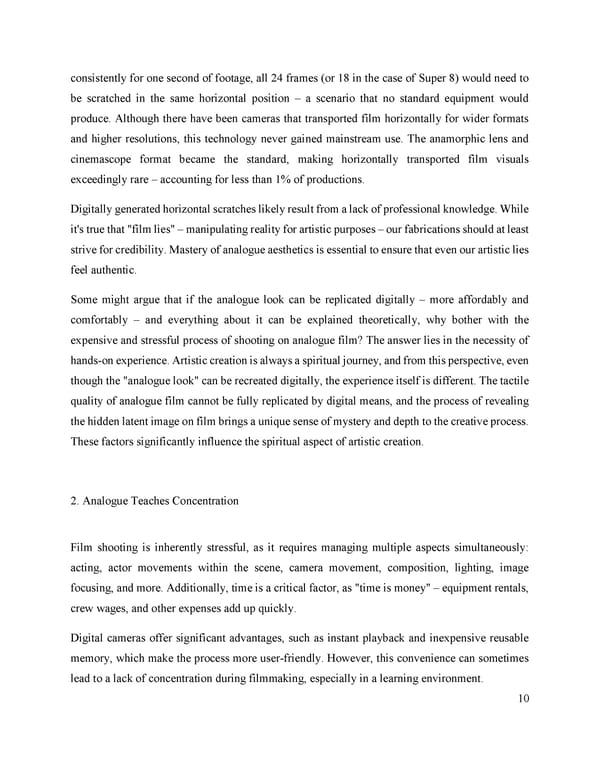consistently for one second of footage, all 24 frames (or 18 in the case of Super 8) would need to be scratched in the same horizontal position – a scenario that no standard equipment would produce. Although there have been cameras that transported film horizontally for wider formats and higher resolutions, this technology never gained mainstream use. The anamorphic lens and cinemascope format became the standard, making horizontally transported film visuals exceedingly rare – accounting for less than 1% of productions. Digitally generated horizontal scratches likely result from a lack of professional knowledge. While it's true that "film lies" – manipulating reality for artistic purposes – our fabrications should at least strive for credibility. Mastery of analogue aesthetics is essential to ensure that even our artistic lies feel authentic. Some might argue that if the analogue look can be replicated digitally – more affordably and comfortably – and everything about it can be explained theoretically, why bother with the expensive and stressful process of shooting on analogue film? The answer lies in the necessity of hands-on experience. Artistic creation is always a spiritual journey, and from this perspective, even though the "analogue look" can be recreated digitally, the experience itself is different. The tactile quality of analogue film cannot be fully replicated by digital means, and the process of revealing the hidden latent image on film brings a unique sense of mystery and depth to the creative process. These factors significantly influence the spiritual aspect of artistic creation. 2. Analogue Teaches Concentration Film shooting is inherently stressful, as it requires managing multiple aspects simultaneously: acting, actor movements within the scene, camera movement, composition, lighting, image focusing, and more. Additionally, time is a critical factor, as "time is money" – equipment rentals, crew wages, and other expenses add up quickly. Digital cameras offer significant advantages, such as instant playback and inexpensive reusable memory, which make the process more user-friendly. However, this convenience can sometimes lead to a lack of concentration during filmmaking, especially in a learning environment. 10
 Lost Analogue: Exploring Film, Music, and Interdisciplinary Methods in Education Page 10 Page 12
Lost Analogue: Exploring Film, Music, and Interdisciplinary Methods in Education Page 10 Page 12